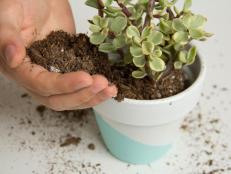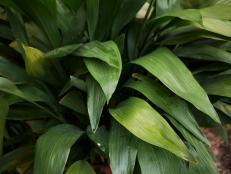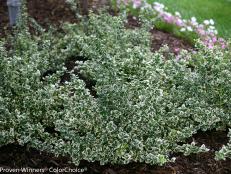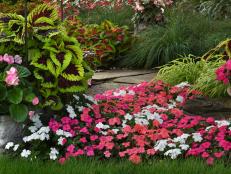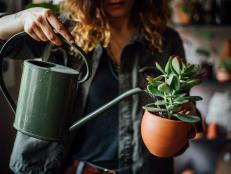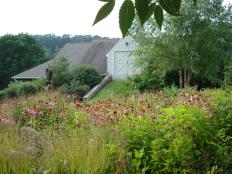Growing Low-Maintenance Moss

Besides providing a tranquil and lush environment, moss highlights even the smallest of plants. Plus there's a lot of variety. Of the more than 15,000 different species of moss worldwide, there are four types that are available commercially:
- Haircap moss or Polytrichum, is the tallest of the four types.
- Cushion moss derives its name from its round, cushionlike growth pattern. It can tolerate partial sun but prefers shade.
- Rockcap moss is usually found growing atop boulders.
- Fern moss is the most versatile of the mosses, and this low-growing type has the highest success rate when transferred.
As far as maintenance goes, all you have to do is keep your moss stand clear of leaves and debris. "One thing that works great is quarter-inch black mesh netting," says moss enthusiast Dave Benner. "Lay it down before the leaves start to fall, and then once the leaves have fallen, you simply roll it up."
Use moss anywhere you want to create a tranquil and serene setting. You can put it between flagstones, in patios, under a tree, in walkways leading to a garden.
You can also use moss to dress up garden art, even birdhouses. Plus it gives water features an enchanted air. In moist and heavily wooded areas, use moss in place of a lawn.
You can buy moss, but be prepared to pay dearly for nature's carpet. "The price ranges from $4 to $10 per square foot, depending on the variety of moss," says Dave. When you receive the moss, it typically comes dry. (It's stored and shipped dry, so it doesn't mold.) After it's been watered, it becomes lush and green in a couple of days.
How to Plant Moss
To transplant your prepared moss, location is key.
- Choose a site with adequate shade.
- Then make sure you have a clear soil surface and remove all leaf litter. The soil should have low pH, ideally between 4.5 and 5.5. If your soil is a little too alkaline, use sulfur powder to acidify it.
- Thoroughly water the soil.
- Press the clump firmly into the soil.
- Water the moss well.
A more cost-efficient way to plant moss is to break it up into pieces. It will take more time to fill in, but you'll ultimately save money and have a larger area covered by moss.
"If you decide to encourage moss to take over naturally, the most important thing is to keep any debris off the moss," Dave says. "And you do that basically with a broom or by hand and remove leaves and debris. Bare soil areas will actually encourage small moss plants to spread."
So the next time moss starts collecting on your steps or walkways, don't use bleach to get rid of it. Instead, find a spot to beautify with it. Even if you live in an arid part of the country, as long as you have shade on your landscape, you can trick moss into growing by using a sprinkler or irrigation system.







